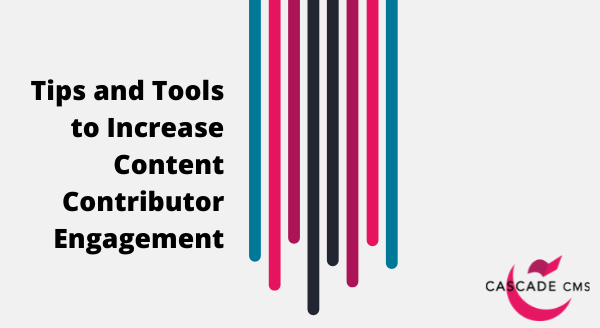
A CMS is a big investment, and it will only render the desired return through maximum adoption. You want a solution that is flexible for developers and intuitive for end users; and you want to ensure that end users don’t just log in to the CMS sporadically. They need to be invested in the tool and in the impact of the web content that they manage.
For non-technical content contributors, Cascade CMS is exceptionally easy to use. In fact, most of our customers have trained their end users in less than an hour.
But beyond general ease of use, there are several ways in which Cascade CMS encourages content contributor engagement.
In order to keep users engaged and invested in the product, each content contributor receives a daily content report email, showing them pertinent data and action items like stale content assets, content that has an upcoming review date, pages with broken links, tasks that have not been completed, workflows in need of attention, and the pages with the highest number of views. Clicking on any of those data points will take the user right into the pertinent asset in the CMS.
Tasks allow content managers and contributors to create and organize their to-do lists in Cascade CMS. They help users stay engaged, complete important action items, and focus on content changes that will render positive website outcomes.
Tasks can be associated with all Site Content area assets including pages, files, blocks, and formats.
The following task types are available:
Cascade CMS users can use threaded commenting to discuss site assets and collaborate on changes directly within the CMS—no more rooting through chat and email messages to find content feedback. Comments can be replied to, (un)resolved, and deleted.
Comments also support @mentions, which will notify an individual via email of a comment that needs a user’s attention, mimicking the functionality of popular tools like Google Docs.
Finally, comments for a particular version of an asset will be automatically populated while a user is editing that asset. This helps contributors keep track of changes and rollback to previous versions, if necessary.
Unlike other CMS providers, Cascade CMS does not force you to use out-of-the-box user levels that can’t be customized. Your organization can create as many user levels that are required to meet its needs. The group and role permissions help to determine the privileges a user has in the CMS and to help establish his or her access to various system resources.
This is important to end-user adoption as it enables people to focus on what is important: creating fresh, quality content. Users don’t have to worry about publishing errors to the live website, nor will they be presented with decisions and/or error messages that are out of their control.
Our product team works hard to add new features that ensure flexibility and ease-of-use. Customers heavily influence our product roadmap by submitting ideas for future enhancements using our online Idea Portal.
User experience and customers’ needs have always been our priority, which is why many features requested in the Idea Portal have already made their way into the product.
If end users are only logging in to your CMS sporadically, it’s unlikely that you’re seeing the maximum return on your CMS investment. Furthermore, your site may be missing valuable content from subject matter experts at your organization.
That’s why one of the key pillars of Cascade CMS is collaborative content creation and end user engagement. A primary goal of ours is maximum end user engagement on a consistent basis—without periodic refresher training—enabling them to focus on creating fresh quality content.
To learn more about how Cascade CMS can support your end users, please visit our Cascade CMS Knowledge Base or drop us a line at info@hannonhill.com.
Last Updated: Jun 22, 2021 11:00 AM